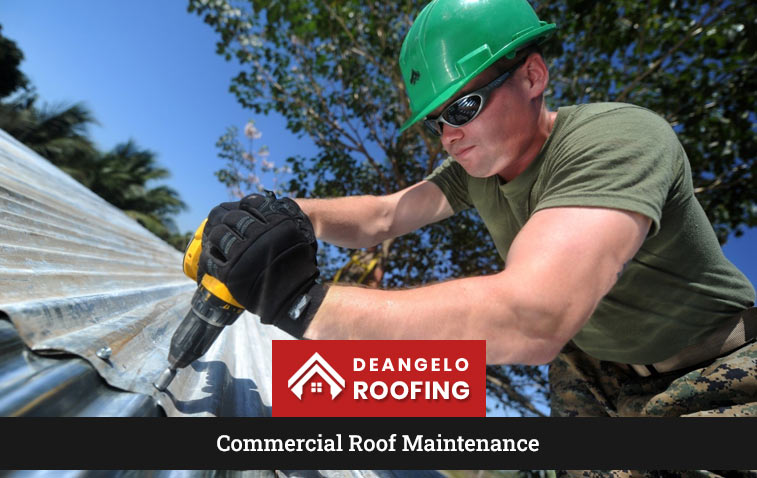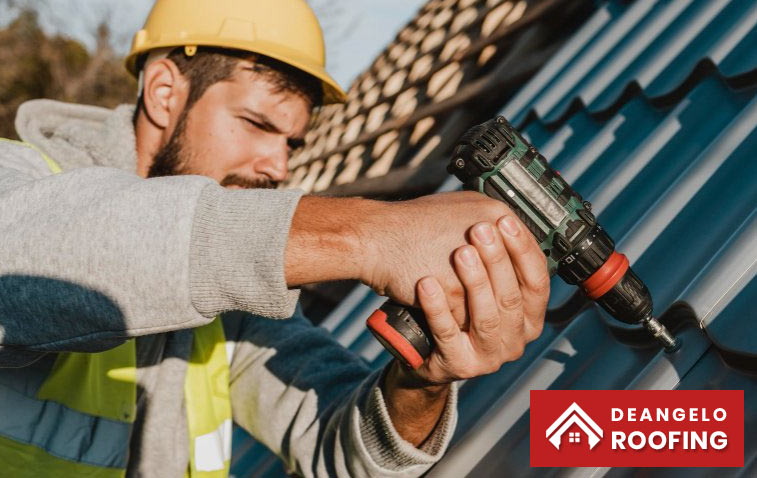Commercial Roof Maintenance: Tips and Best Practices
Commercial roof maintenance is essential for businesses in Los Angeles to protect their investments, ensure safety, and maintain a comfortable environment. Regular maintenance helps prevent costly repairs, energy inefficiencies, and structural damage.
A well-maintained roof prevents leaks, clears debris, repairs flashings, and includes routine recoating. Partnering with a professional maintenance service ensures your commercial roof remains in top condition and extends its lifespan.

Types of Commercial Roofs
Commercial roofing systems come in various types, each with its own characteristics and maintenance requirements. Understanding your roof type is essential for developing an effective maintenance plan. Here are the most common types of commercial roofing systems:
Built-Up Roofing (BUR)
Built-up roofing (BUR) consists of multiple layers of bitumen and reinforcing fabric, topped with a layer of gravel or mineral surfacing. BUR is known for its durability and resistance to foot traffic, but it requires regular maintenance to prevent leaks and blistering.
Modified Bitumen Roofing
Modified bitumen is an asphalt-based roofing system that combines the durability of BUR with the flexibility of single-ply membranes. It is available in both torch-applied and self-adhering varieties, and it requires periodic inspections and repairs to maintain its performance.
Single-Ply Membranes
Single-ply membranes, such as TPO, PVC, and EPDM, are lightweight, flexible, and easy to install. They offer excellent resistance to UV radiation and weathering, but they can be susceptible to punctures and tears if not properly maintained.
Metal Roofing
Metal roofing is known for its longevity, energy efficiency, and resistance to fire and wind damage. However, it can be prone to corrosion, fastener loosening, and seam separation if not regularly inspected and maintained.
The expected lifespan of a commercial roof depends on various factors, including the roofing material, installation quality, climate, and maintenance practices. Generally, BUR and modified bitumen roofs can last 20-30 years, single-ply membranes 15-25 years, and metal roofs 40-50 years or more with proper maintenance.
Common Commercial Roofing Issues and Solutions
Identifying and addressing roofing issues promptly is essential to prevent further damage and extend the life of your commercial roof.
| Issue | Solution |
| Leaks and moisture intrusion | Identify and repair the source of the leak, replace damaged materials |
| Ponding water and drainage problems | Clean and maintain drains, install additional drainage systems |
| Blistering, splitting, and ridging | Repair or replace damaged areas, apply roof coatings |
| Flashing and sealant deterioration | Replace deteriorated flashing and sealants, use high-quality materials |
| Damage from weather events or mechanical impact | Repair or replace damaged areas, implement preventive measures |
Extending the Life of Your Commercial Roof
- Preventive Maintenance and Repairs: Preventive maintenance and timely repairs are key to extending the life of your commercial roof. Regular inspections can help identify potential issues before they become major problems, allowing for cost-effective repairs and prolonging the roof’s lifespan.
- Roof Coatings and Restorations: Roof coatings and restorations can significantly extend the life of an aging roof by providing an additional layer of protection against UV radiation, weathering, and leaks. Coatings can also improve energy efficiency by reflecting solar heat and reducing cooling costs.
- Energy-Efficient Upgrades: Energy-efficient upgrades, such as installing reflective coatings or adding insulation, can help reduce energy consumption and lower utility bills while also extending the life of your roof by reducing thermal stress.
- Vegetation Management and Tree Trimming: Vegetation management and tree trimming are essential to prevent damage from falling branches and debris. Overhanging trees can also cause shading and moisture retention, leading to algae growth and accelerated roof deterioration.
- Enhancing Roof Access and Safety: Enhancing roof access and safety is crucial for facilitating regular inspections and maintenance. Installing proper access ladders, walkways, and fall protection systems can help ensure the safety of maintenance personnel and prevent accidents.
Benefits of Timely Roof Replacement
Replacing your commercial roof at the right time can provide numerous benefits for your building and business. Here are some of the key benefits of timely roof replacement:
- Improved energy efficiency: A new roof can significantly improve your building’s energy efficiency by providing better insulation and reflectivity.
- Reduced maintenance costs: An old, deteriorated roof requires frequent repairs and maintenance, which can add up over time. By replacing your roof when needed, you can reduce ongoing maintenance costs and avoid the need for constant repairs.
- Increased property value: A new roof can increase the value of your commercial property, making it more attractive to potential buyers or tenants.
- Enhanced Appearance: A new roof can greatly enhance the overall appearance of your commercial building, giving it a fresh, updated look.
Conclusion
Commercial roof maintenance is an essential aspect of building ownership in Los Angeles. By understanding your roof type, addressing common issues promptly, and implementing a regular maintenance plan, you can extend the life of your roof, save money on repairs, and protect your investment. Get in touch with us now!!!

